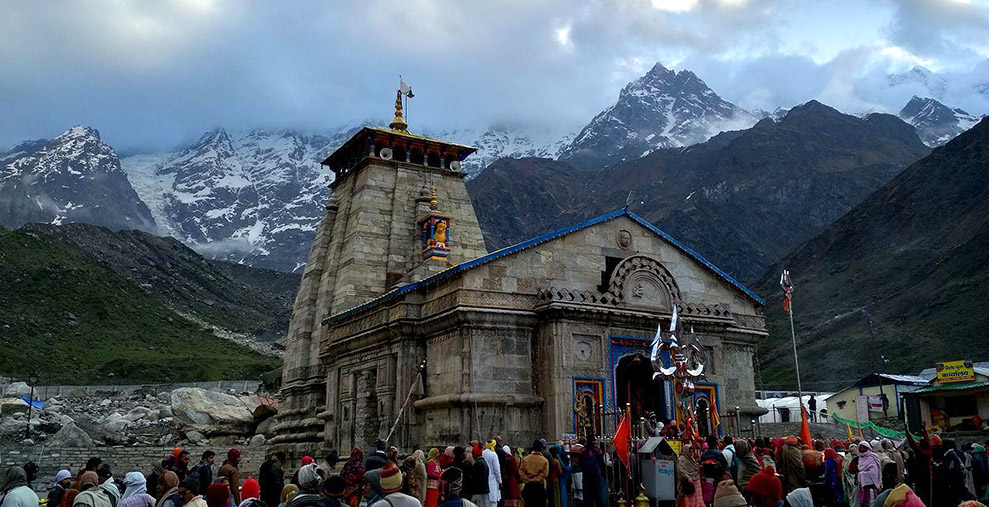One of the most prominent Hindu pilgrimage places is Kedarnath. The Chota Char Dham pilgrimage includes Kedarnath. Despite the fact that the village has been a pilgrimage site since ancient times, pilgrims could only reach it by hiking. The Indian government did not make substantial infrastructural upgrades such as roads and highways until after the 1962 Sino-Indian hostilities. As a result, the village became more accessible to pilgrims, and it became a component of their yearly religious rituals.
History & Mythology:
It is thought that after the war of Kurukshetra, the Pandavas travelled to Banaras to repent of killing their own and seek the Lord’s blessings. Shivji, on the other hand, wanted to avoid seeing the brothers and sought refuge in Guptakashi.
However, after the Pandavas gave up their hunt for the Lord, Shivji decided to disguise himself as a buffalo so that they wouldn’t identify him. Shivji wanted to conceal even more now that the Pandavas were getting closer.
As a result, He decided to go underground and become invisible as well. Brother Bhma, on the other hand, fought hard to keep him from fleeing by grasping the bull’s legs and tail. Sadly, the Lord dived and vanished at that location, leaving only his hump, which is today revered at Kedarnath Temple.
The Pandavas were excused from their misdeeds by cosmic energy, according to legend, and Shivji promised that He would be present in Jyotirlinga form at Kedarnath from then on.
Best Time to Visit:
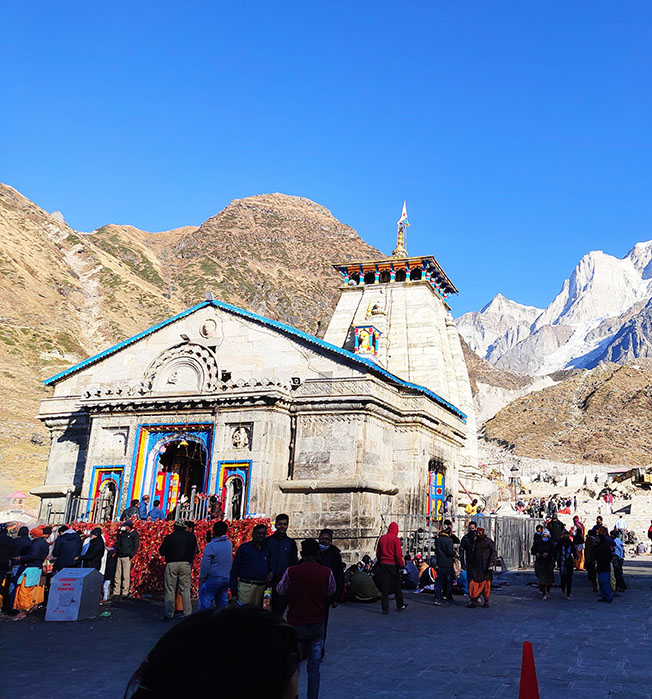
You can’t go wrong with a diversion to Kedarnath when in Uttarakhand, both spiritually and adventure-wise. However, because to its exceptionally chilly environment, spending your summers in Kedarnath is a better choice – the best time to visit Kedarnath is from April to June. This is when the weather is pleasant and warm, as opposed to the cold temperatures of winter, and you may walk around freely. The monsoon is unpredictable, ranging from little rain to tremendous downpours.
Kedarnath is one of the ‘Char Dhams’ that many Indians visit over their lifetimes, nestled in the upper folds of the Himalayan mountain range in Rudraprayag district. The followers and devotees of Lord Shiva, who resides in Kedarnath as Lord Kedar, hold the place in high regard. The entire location reeks of mythology and holds enormous historical significance for this country. It is thought to be the god’s permanent residence, and devotees are welcome to visit during the summer months, which are the best months to visit Kedarnath.
Summer is the greatest time to visit Kedarnath since the weather is pleasant and the temperature stays between 15 and 30 degrees Celsius. The day is pleasant since the sun is warm and there is a moderate cold breeze. With the weather on your side, now is the best time to explore Kedarnath temple, Panch Kedar, and Chota Char Dham, as well as other local attractions.
The monsoon at Kedarnath is unpredictable. The region doesn’t get much rain on average, but when it does, it can cause landslides and blockages. If you don’t want to be adventurous, skip this season and schedule your spiritual retreat in the summer.
Expect bitterly cold weather if you visit the Himalayas in the winter. In more ways than one, the winter in Kedarnath will test your endurance and leave you breathless. The scenery is stunning, but you’ll have to suffer temperatures well below zero at times. Although there are some sunny days in Kedarnath throughout the winter, it is a frigid time of year.
Easy way to visit Kedarnath:
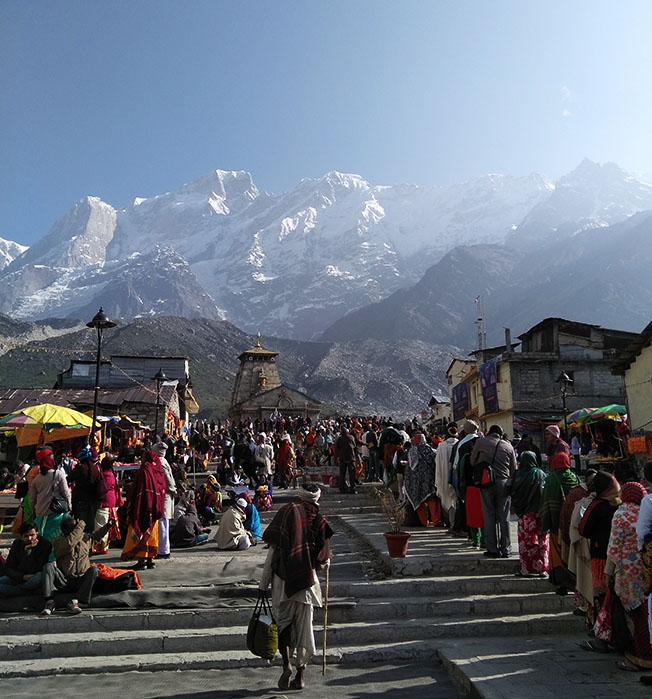
If you are unable to walk more than 16 kilometres to visit Kedarnath temple, you must hire a pony to transport you there. They charge between 2500 and 3000 rupees for one side, although there is a simple way to get to the kedarnath temple.
- Phata is a small town near Kedarnath.
- Helicopter service to Kedarnath from Phata costs roughly 7000 Rs. on each sides, which is almost as much as a pony ride, but it would save you time and effort in getting to Kedarnath.
- Do the darshan and return to Phata through the Kedarnath Helipad.
- If you are on a tight budget, rent a helicopter from Sersi for roughly 2500 USD for one side and return through the trekking path because walking down is easier than climbing.
A few tips for your trek to the Kedarnath Temple in 2021:
- To avoid the strong sunshine of noon, begin your hike early in the morning.
- Depending on the weather, bring an umbrella and a raincoat.
- Wear decent walking shoes and only carry what you need in your bag because a hefty bag will slow you down on the hike and an extra burden will injure your back.
- Carry water bottles but don’t throw them away; nature must be respected.
- Keep your eyes on the hiking trail the majority of the time, as horses returning from the temple may collide with you or cause serious injury.
- Check the ID Cards issued to Porters and Mule Owners for safety reasons.
- Check with local authorities, tour guides, or tour companies regarding weather and road conditions before beginning your journey during the monsoon season.
- Due to religious restrictions, photography is normally prohibited within the temple. It is prudent to follow the guidelines established by temple authorities.
- Weekends/long weekends are extremely packed, although weekdays are not. In mid-November, the temple was also closed.
- After mid-October, the nighttime temperatures will dip into the teens, so bring plenty of woollens and avoid travelling around Diwali, which is the busiest time of year. Travel 10-15 days prior to Diwali.
Important things to carry for Kedarnath Yatra:
Light Baggage: It is critical that you do not bring any unnecessary items with you on the Kedarnath Temple trip. During a trek to the Kedarnath Temple, you should only bring the bare necessities.
Water Bottle: Because water is so important, you should bring a bottle with you that will keep you hydrated. We would appreciate that you bring a hot water bottle with you. Which would keep you warm and assist you in dealing with the drop in temperature.
Medicines: The Kedarnath temple is located at an altitude of 3587 metres above sea level, as we all know. The risks of contracting a clod and developing a fever are extremely high. It would be advantageous for you to keep a few vital cold and fever drugs on you at all times. You can bring some additional stomach and vomiting pills with you. This will assist you during your walk to the Kedarnath Temple and will prevent you from being overly reliant on others.
Clothes to Keep You Warm:The weather in the Kedarnath temple is always bitterly chilly. Even in the summertime. You may encounter snowfall there, so bring your winter clothing, such as jackets and other items that protect you from head to toe.
Pack Foods: We recommend that you bring some packed foods with you, depending on your preferences. Lightweight foods that keep you warm on the inside and offer you energy are a good option. The Kedarnath temple trip requires you to travel around 18 kilometres. You can bring dry fruits, chocolates, and cookies, for example.
Places you can visit in the Holy town of Kedarnath.
1. Kedarnath Temple
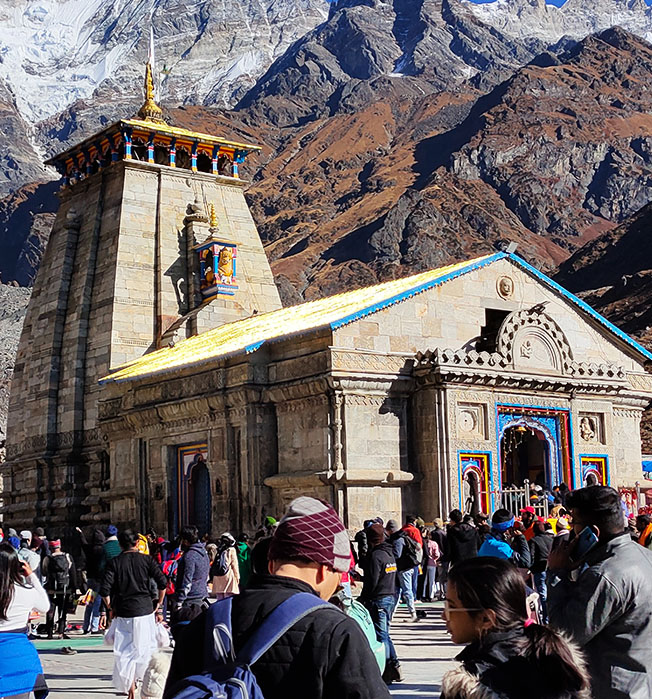
The Hindu temple of Kedarnath is regarded as one of the holiest in the world. It is devoted to the Hindu god Shiva and is located in Kedarnath near the Mandakini River. The temple’s beginnings can be traced back to the Mahabharata, when the Pandavas erected it to atone for the murders they committed during the Mahabharata conflict. The temple’s spectacular architecture, as well as the sculpted idols of many Hindu deities inside, are distinctive and draw hundreds of visitors.
2. Vasuki Tal
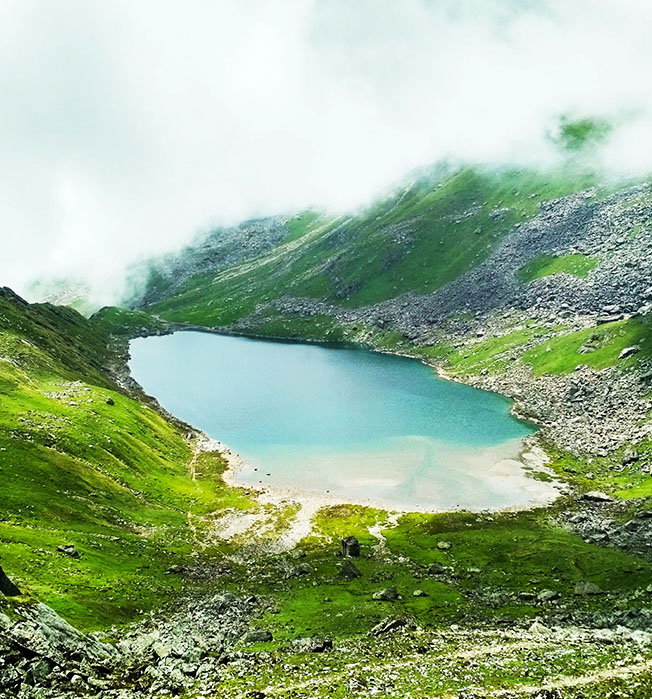
Vasuki Tal is a reasonably simple walk trail that leads to a glacial lake in the highlands. The crystalline lake nestled in the Himalayas is one of the most breathtaking places you’ll ever see. The walk normally begins in Gauri Kund, where hot sulphur springs may be found, and concludes at the breathtaking glacial lake.
3. Gauri Kund
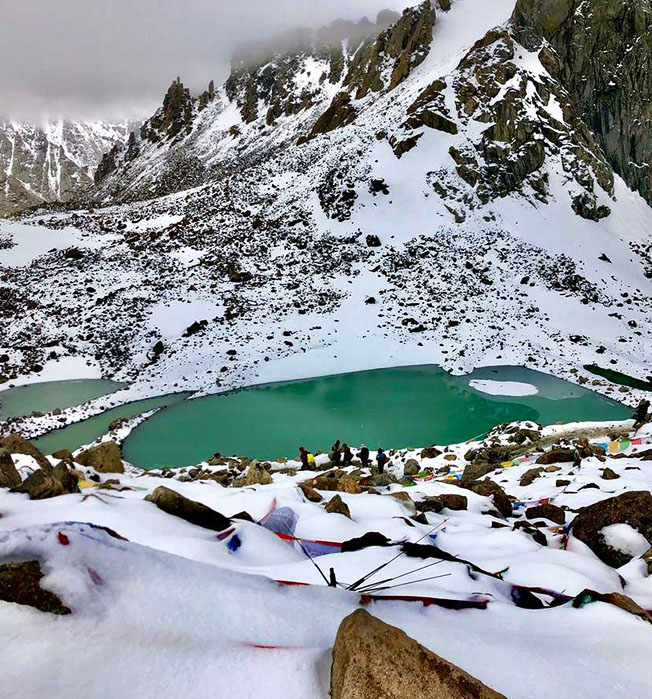
Gauri Kund, the world’s second highest lake, is also a popular pilgrimage destination. It is said to be the location where Goddess Parvati practised penance in order to satisfy Lord Shiva. Lord Ganesha was said to have been created at this location by Parvati Devi after she bathed in this lake, according to legend. This is also the starting point for trekkers heading to Kedarnath Temple.
4. Chorabari Tal
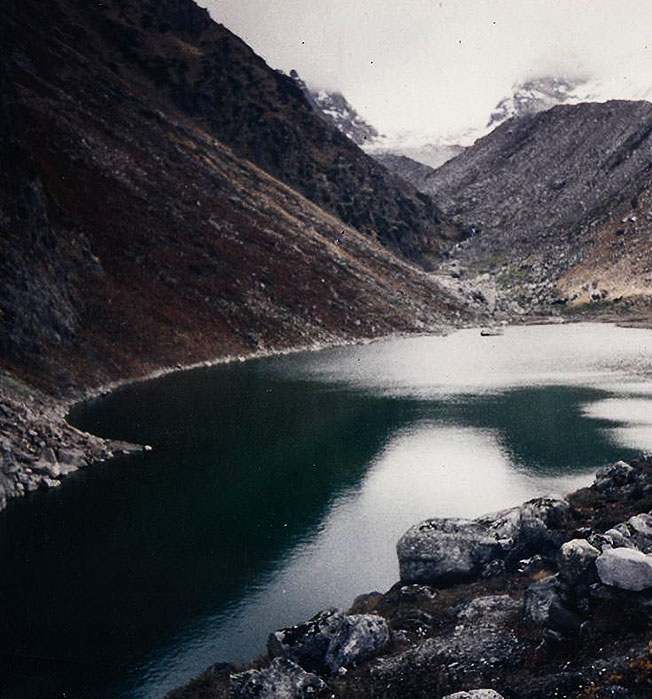
The Chorabari Tal, an old lake formed by the Chorabari glacier, is also known as Gandhi Tal since part of Mahatma Gandhi’s ashes are buried here. According to Hindu mythology, this lake was the location where Lord Shiva, the first guru, taught the Saptrishi about Yoga. Near the Bhairava Temple, there is a precipice where worshippers used to jump to their deaths, believing it would bring salvation. The British, on the other hand, stopped this practise in the nineteenth century.
5. Triyuginarayan Temple
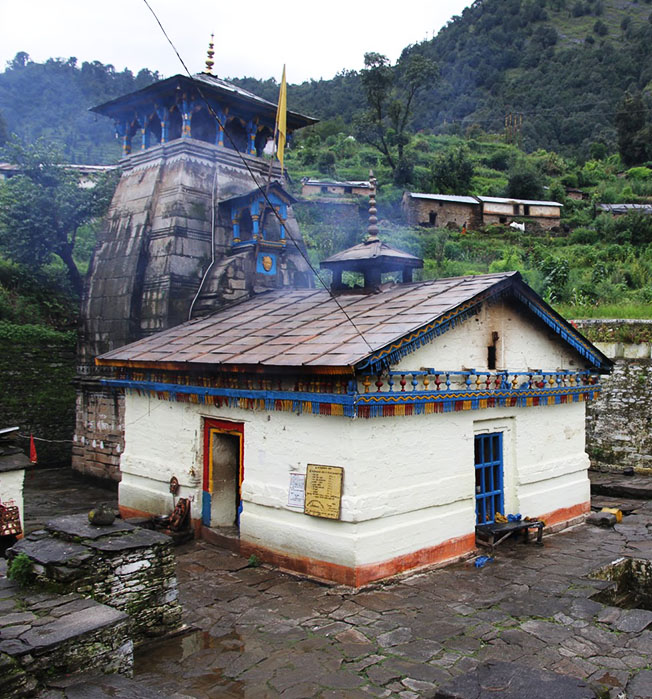
Triyuginarayan Temple, which is a short distance from Gauri Kund, is a significant pilgrimage place. Lord Shiva and Goddesses Parvati married here, and it is stated that all the gods came to witness their sacred union. A stone named Brahma Shilla in front of the temple symbolises the exact place of the wedding. Inside the temple, there is said to be an eternal flame that has been burning since the marriage.
How to Reach Shri Kedarnath Dham
By Road: Haridwar, Rishikesh, Uttarkashi, Chamoli, and Kedarnath Dham are all easily accessible. The roads are becoming larger, and the government makes every effort to keep them in good condition throughout the Yatra. After completing the Gangotri Dham Yatra, yatris visit Kedarnath Dham as the third Dham on their Char Dham Yatra. There are two ways to Kedarnath: one via Ghansali for Chota Chardham Yatra pilgrims, and another via Srinagar, Rudraprayag for Do Dham Yatra pilgrims. Although the two routes converge at Tilwara, the same route is taken to Kedarnath from there. Between the usual routes, there are many route extensions that are used based on the demand.
Route Via Ghansali : Shri Kedarnath Dham is reachable to Chardham Yatris through Ghansali, Mayali, Tilwara, Guptkashi, Sitapur, Sonprayag, Gauri Kund, and an 18-kilometer trek.
Route Via Rudraprayag : Route Through Rudraprayag Starting from either Haridwar or Rishikesh, the best route to Kedarnath and Badrinath Dham is via Byasi, Devprayag, Kirtinagar, Srinagar, Rudraprayag, Tilwara, Agastmuni, Guptkashi, Phata, Sitapur, Sonprayag, and Gaurikund. Gaurikund is the last motorable location; from here, it is an 18-kilometer hike. You can employ Pony, Doli, or Pithu depending on your comfort and health. They have different rates depending on weight, one way or return, and other factors.
Activities in Kedarnath
Pilgrimage : Perched at 3,500 metres above sea level, Kedarnath is one of the most venerated Hindu sanctuaries, attracting thousands of pilgrims each year. During the winter, the temple is covered in a heavy coating of snow.
Trekking : The Kedarnath temple is 19 kilometres from Gaurikund, the nearest settlement with road access. As a result, the 16-kilometer trip to the Kedarnath shrine is a magnificent trekking experience. In Kedarnath, you can further extend your hikes to Chorabari Tal, Vasuki Tal, and Bhairon mandi.
Camping in Kedarnath : Because there is limited housing in Kedarnath, tourists and pilgrims can pitch tents near the town and take in the natural beauty that surrounds it, as well as the towering Kedarnath peak in the distance.
Conclusion:
If you want to reconnect with nature and the Gods while rejuvenating and having some fun on your next vacation, head to Kedarnath. This location will transport you to a simpler and more genuine era.
You’ll be enchanted by the peaceful life of the hills and awestruck by the power of belief. If you have any questions about this wonderful wonderland, please leave a comment below and I will be pleased to answer them.
Enjoy your journey!
